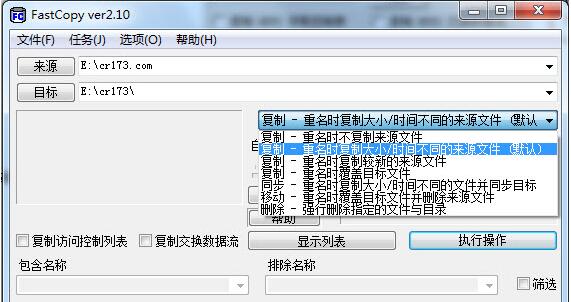
The challenge earlier in the week was salvaging the good files from a drive that had bad sectors. (For both tests I used Win 7 64-bit running with 8 GBs of RAM.

Yet another web search for "fast copying" utilities unearthed FastCopy.įast copy has an instance rate of between 20-30 MB/s and finished the job in 21 mintues with an average copy speed of 33.82 MB/s. It must have to do with having so many files because there haven't been any concerns when doing large copy volumes with a low number of files (like VM images). In the past I had compared several fast copy utilities to Window native copying and found very little difference due to the fact that Microsoft has actually been working a lot on improving Explorer's file copying intelligence and speed.Įxplorer settled in at 1.56 MB/second - projecting many hours to complete. I recently had to move 100,000 files totally 45 GB (Adobe Lightroom Cache).

Fast copy to the rescue - but first, let's talk about the FAST part. With Windows Copy this is a pain because if reads bad data it chokes and I am left trying to figure what was copied and what was not and what more can be salvaged. Recently I needed to copy files from a failing drive.


 0 kommentar(er)
0 kommentar(er)
